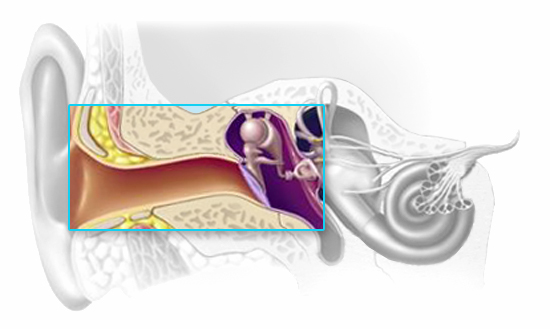Although ear wax is not a common cause of significant hearing loss, it can accidentally be pushed onto the tympanic membrane by a cotton swab or may be inflated when water enters the ear and cause obstruction and hearing loss. This can be removed by careful suction to avoid injury that can occur with syringes.

Sudden changes that are not likely to damage the tympanic membrane, which can occur when diving with oxygen tanks or flying in cold weather, can lead to bleeding in the middle ear or simply to increased secretions from the mucosa of the middle ear. The liquid can be removed with an incision in the tympanic membrane and good drainage through the incision.
The sudden severe conductivity damages usually come from trauma to the tympanic membrane or middle ear. This can be caused by diving or explosion trauma, when the tympanic membrane has suffered extensive damage. This is usually evident from the historical facts and the simple test that shows the damaged tympanic membrane. With this type of injury, the maximum hearing loss that can occur is 40dB.
Direct trauma to the head, as the one that can be caused by a car accident, can break down the aural alyssum. The most frequent lesion is the connection of anvil-stirrup (anvil-stirrup link). When this occurs it leads to complete discontinuity of the alyssum and a conductivity lesion of about 60dB.
In all these cases, a reliable tone audiogram is required with coverage of treatment by bone site in order to exclude underlying sensorineural damage caused by trauma, which reduces the chances of full recovery. The tympanometria, when the tympanic membrane is intact, can show a very high curve with a peak, typical discontinuity of acoustic alyssum or a straight line when the middle ear is filled with fluid.
The problems in acoustics alyssum can often be cured with surgery. The tympanic membrane is reunited with the stirrup using either the anvil of the patient (which has been reshaped and repositioned between the handle of the malleus and stirrup) or artificial bone. This is usually made from hydroxyapatite, one of the cornerstones of the bone. The surgery is called ostarioplastiki. The tympanic membrane may in turn be remedied by using microsurgical techniques and the technique is called tympanoplastiki or myrongoplastiki.